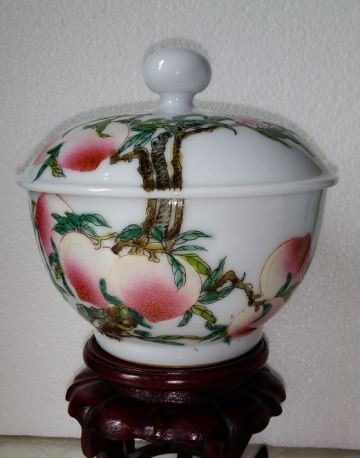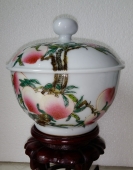大清乾隆年制粉彩蟠桃纹盖钵
- 编 号:803350
- 销售状态:展示 展览中 2021.10.08号后可提货
- 库 存: 1
- 售 价:议价
(平台服务时间:周一到周五 9:00-17:00)
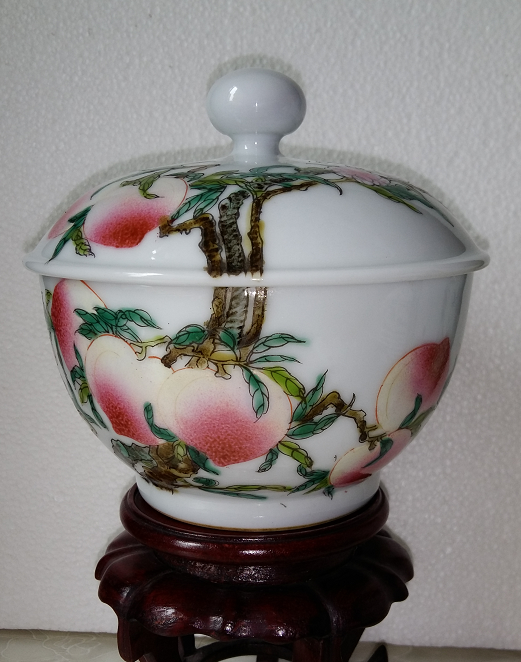
- 资质:
- 评分:
1分 2分 3分 4分 5分 6分 7分 8分 9分 10分 7分
- 印象:
- 经营时间:2022年
- 展厅面积:500平米
- 地 区:上海-静安
| 创作年代 | 明清 | ||||
|---|---|---|---|---|---|
| 作品分类 | 陶瓷紫砂- 瓷器-清代 | 品种 | 粉彩 | 器型 | 碗 |
| 窑口 | 景德镇窑 | ||||
| 作品标签 | |||||
| 适用空间 | |||||
作品介绍
粉彩瓷是珐琅彩之外,清宫廷又一创烧的彩瓷。在烧好的胎釉上施含砷物的粉底,涂上颜料后用笔洗开,由于砷的乳蚀作用颜色产生粉化效果。粉彩是乾隆朝瓷器中所占此重较大的品种之一,在雍正瓷的基础上又有新的突破。乾隆粉彩中的一部分继承了雍正时期在肥润的白釉上绘疏朗艳丽纹饰的特点。
乾隆帝统治清王朝长达60年,将“康乾盛世”的繁华局面推向了极致。据《清档》记载,乾隆皇帝对瓷器有着特殊偏好,对粉彩瓷更是情有独钟,经常直接关注粉彩瓷的烧制。如乾隆十三年(1748年)乾隆下旨:“唐英呈进瓷器仍系旧样,为何不照所发新样烧造进呈,将这次呈进瓷器钱粮不准报销,着依赔偿。”这种大背景下,粉彩瓷达到了其发展的顶峰。
雍正、乾隆朝粉彩蟠桃福寿纹瓷器,要属中国历代最秀雅瓷器之一,烧造于景德镇御窑厂,纹饰喜庆吉祥,釉上粉彩色调柔美,受欧洲传教士影响启发,珍稀非凡,代表着中国宫廷艺术中,美感及技术之巅峰。自古伊始,桃乃吉祥长寿之征,桃枝且能避邪。孔子所编的《诗经.国风》中即有「桃之夭夭,灼灼其华。之子于归,宜其室家」等句,以繁盛桃花赞誉美满幸福之婚姻家庭。
 此件藏品为乾隆粉彩蝙蝠寿桃纹盖钵也是一件乾隆粉彩瓷器的精美之作。
此件藏品为乾隆粉彩蝙蝠寿桃纹盖钵也是一件乾隆粉彩瓷器的精美之作。
先看造型。此碗口径12.5厘米,高7.5厘米,圈足7.5厘米,带盖总高13.5cm,碗的口部外撇,向下弧腹收敛线条饱满,圈足微高;造型稳重规整。次看胎骨釉面。碗的足脊露胎,可见胎白而细腻致密,釉色洁白微闪青色,釉面莹润,触手细腻光滑。
 再看纹饰。此碗的纹饰是清代乾隆年间比较典型的寓意福寿图案。碗的外绘有虬劲苍老的桃树枝干,俗称“过墙枝”;桃枝上绘有九个寿桃,在鉴赏雍乾寿桃纹饰时,素有“雍八乾九”的说法,即雍正绘八个桃,而乾隆绘九个桃,都是寓意长寿。与寿桃配合的还有蝙蝠。此碗绘有5只蝙蝠,寓意“五福临门”;
再看纹饰。此碗的纹饰是清代乾隆年间比较典型的寓意福寿图案。碗的外绘有虬劲苍老的桃树枝干,俗称“过墙枝”;桃枝上绘有九个寿桃,在鉴赏雍乾寿桃纹饰时,素有“雍八乾九”的说法,即雍正绘八个桃,而乾隆绘九个桃,都是寓意长寿。与寿桃配合的还有蝙蝠。此碗绘有5只蝙蝠,寓意“五福临门”;
整个纹饰寓意五福祈寿的美好愿望。纹饰的画工细腻,功力深厚,彩料浓淡相宜,层次丰富,是乾隆朝典型纹饰;整个纹饰比较雍正粉彩的淡雅来说,乾隆粉彩显得稍微深浓一些。这是两朝的区别所在,也反映出两朝的审美趣味有所不同。

四看碗底款式。此碗圈足露胎,可见胎釉交接处有淡淡的火石红。碗底中间有青花“大清乾隆年制”篆书款,此款用笔老道,笔迹走向清晰,字体规整,符合乾隆官窑款的基本特征。
此碗造型规整,观之稳重雅致,纹饰秀美,是一件珍贵的乾隆到代粉彩碗真品,值得收藏。
英文翻译:
In addition to enamel, famille rose porcelain was created by the Qing court. Apply an arsenic-containing foundation on the burnt glaze, paint it and wash it off with a pen, and the color will have a chalking effect due to the emulsification of arsenic. Famille rose is one of the most important varieties of porcelain in the Qianlong Dynasty, and it has made a new breakthrough on the basis of Yongzheng porcelain. Part of the Qianlong famille rose has inherited the characteristics of painting sparse and colorful patterns on the plump white glaze during the Yongzheng period. Emperor Qianlong ruled the Qing dynasty for 60 years, pushing the prosperous situation of the "Kang and Qian dynasty" to the extreme. According to the records of Qing Dian, Emperor Qianlong had a special preference for porcelain, and he had a special liking for famille rose porcelain, and he often paid direct attention to the firing of famille rose porcelain. For example, in the thirteenth year of Qianlong (1748), Qianlong issued a decree: "Tang Ying submitted the porcelain to the old sample, why not burn it according to the new sample issued, and the money and grain submitted to the porcelain are not allowed to be reimbursed. "Under this background, famille rose porcelain has reached the peak of its development. Yongzheng and Qianlong dynasty famille rose blessings and longevity porcelains are one of the most elegant porcelains of all dynasties in China. They were fired in the Jingdezhen imperial kiln factory. The decorations are festive and auspicious, and the pastel colors on the glaze are soft and beautiful. Inspired by European missionaries, they are rare. It represents the pinnacle of beauty and technology in Chinese court art. Since ancient times, peaches are a sign of auspicious and longevity, and peach branches can protect against evil. The Book of Songs compiled by Confucius. In Guofeng, there are sentences such as "Taozhiyaoyao, burns its blossoms. The son is home, it is suitable for his family." It praises the prosperous peach blossoms for a happy marriage and family. This collection is a Qianlong famille rose bowl with batshou peach pattern and a fine piece of Qianlong famille rose porcelain. Look at the shape first. The bowl has a diameter of 12.5 cm, a height of 7.5 cm, a circle foot of 7.5 cm, and a total height of 13.5 cm with a lid. The bowl's mouth is splayed outwards, the downwardly curved abdomen converges and the lines are full, the circle feet are slightly high; the shape is stable and regular. Look at the glazed fetal bone. The spine of the bowl reveals the fetus, showing that the fetus is white and delicate and dense, the glaze is white and slightly flashing cyan, the glaze is shiny, and the tentacles are delicate and smooth. Look at the ornamentation again. The ornamentation of this bowl is a typical symbol of blessing and longevity during the Qianlong period of the Qing Dynasty. The outside of the bowl is painted with old peach branches, commonly known as "crossing the wall"; the peach branches are painted with nine longevity peaches. When appreciating the decorations of the peaches of Yongqian and longevity, it is known as "Yong eight dry nine", that is, Yongzheng painting The eight peaches, and the nine peaches painted by Qianlong, all symbolize longevity. Bats also cooperate with Shou Tao. This bowl is painted with 5 bats, meaning "five blessings"; The whole ornamentation symbolizes the good wishes of five blessings and longevity. The decorations are exquisitely painted, with deep skills, suitable color materials and rich layers, which are typical of Qianlong dynasty; the whole decoration is more elegant than Yongzheng famille, Qianlong famille is slightly darker. This is the difference between the two dynasties and also reflects the difference in aesthetic tastes between the two dynasties. Look at the bottom style of the bowl. This bowl ring reveals the fetus, showing a faint flint red at the junction of the glaze. In the middle of the bottom of the bowl, there is a blue-and-white "Qianlong reign of Qing Dynasty" seal script. This style is old-fashioned, with clear handwriting and regular fonts, which conforms to the basic characteristics of Qianlong official kiln style. This bowl has a regular shape, a steady and elegant view, and beautiful decorations. It is a precious authentic famille rose bowl from the Qianlong era, worthy of collection.
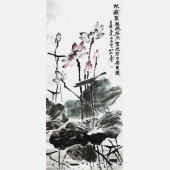 王兆奎
王兆奎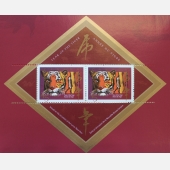 加拿大资深
加拿大资深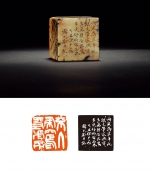 韩天衡
韩天衡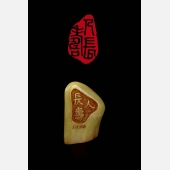 陈维廉
陈维廉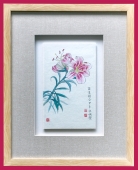 赵映璧
赵映璧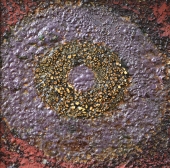 魏新
魏新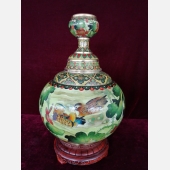 米振雄
米振雄 康蕾
康蕾